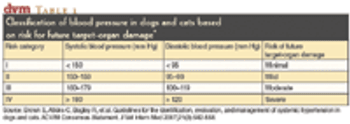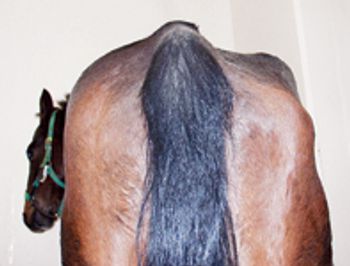![JenniferGarcia-[2241230]-783550-1384158407150.jpg](https://cdn.sanity.io/images/0vv8moc6/dvm360/e0cdd84b0c369f6ad770bc0892206085efbb0bf5-129x150.jpg?w=350&fit=crop&auto=format)
Discover new strategies for instituting antiepileptic drug therapy.
![JenniferGarcia-[2241230]-783550-1384158407150.jpg](https://cdn.sanity.io/images/0vv8moc6/dvm360/e0cdd84b0c369f6ad770bc0892206085efbb0bf5-129x150.jpg?w=350&fit=crop&auto=format)
Discover new strategies for instituting antiepileptic drug therapy.

Discover how to pinpoint the underlying cause of this condition and administer appropriate treatment.

Dr. Mark Epstein looks at what can result in this maladaptive pain state in veterinary patients.

When a cat experiences seizures that do not impact the entire body, this may indicate changes in the hippocampus of the cat's brain.

This typically human disorder may occur in dogs as well.

Early identification is key in this widespread neurologic disease.

Generally, the underlying causes of neurological abnormalities of the head and face are similar whichever nerve (or nucleus) is affected, but, in addition, there are a few conditions that are specific to, or more commonly affect, certain nerves.

The hallmark of CNS inflammation is infiltration of peripheral blood leukocytes into the neuroparenchyma and its coverings, resulting in various types of encephalitis and/or meningitis, and sometimes associated with altered vascular integrity that leads to edema.

Seizures are a common problem in veterinary medicine. Control of canine epilepsy is only possible in up to 70 80 % of cases on phenobarbitone (PB).

Status epilepticus is a danger to the patient and a treatment challenge for the clinician. Although no evidence exists to indicate that early initiation of appropriate treatment improves the outcome in dogs with seizures, such evidence does exist for human medicine and remains an important basic tenet of treatment.

The vestibular system is essential in maintaining balance and preventing the animal falling over by keeping and adapting the position of the eyes, head and body with respect to gravity.

The overall aim when approaching neurological problems is essentially the same as with any clinical problem.

A recent study sought to establish the incidence of and risk factors for seizures after myelography with iohexol in dogs.

From the 2011 ACVIM Forum: A new treatment for epileptic dogs?

The pathophysiological mechanisms that cause seizures are poorly understood. Neurons are excitable tissue constantly held in check. Neurons have a seizure threshold and seizures result when the threshold is lowered and there is imbalance between excitatory and inhibitory mechanisms that favors excitation.

The brain is an extremely well vascularized organ and is supplied by approximately 15-20% of the total blood flow of the body. This high requirement for blood is necessitated by the brain's high metabolic activity and corresponding need for oxygen and glucose to fuel this activity.

A variety of clinical signs may be seen with inflammatory CNS disease, depending on what area of the nervous system is affected. Involvement of the forebrain (cerebral cortex and thalamus) may result in seizures, altered mentation (stupor, coma, delirium, head pressing), vision abnormalities, and compulsive pacing or circling. Involvement of the brainstem (pons and medulla oblongata) may result in altered mentation, cranial nerve deficits (e.g., vestibular dysfunction [head tilt, nystagmus], facial nerve paralysis, swallowing difficulties, tongue paralysis), ataxia, and proprioceptive deficits.

Neck and back pain are common presenting complaints in veterinary medicine and occur in animals with a variety of signalments. Animals may present with a chronic history of lower-grade discomfort, although acute presentations of moderate to severe pain are common and extremely distressing to owner and pet alike.

Acute paraplegia is a sudden onset of paralysis in the pelvic limbs, and is a common problem in small animal patients. Paraparesis is weakness in the pelvic limbs due to a neurologic cause, and can be quite variable in severity (ambulatory to non-ambulatory).

The vast majority of seizures are self-limiting events, with eventual spontaneous return to resting or baseline neurologic function. However, during status epilepticus, a variety of changes occur within cells and networks of cells that result in a situation where the seizure activity becomes self-sustaining.

The clinical manifestation of excessive and/or hypersynchronous neuronal discharge within the brain; may be manifested as episodic impairment or loss of consciousness, abnormal motor phenomena, psychic or sensory disturbances, or autonomic signs such as salivation, vomiting, urination or defecation. Synonyms – convulsion, ictus, fit.

The vestibular system is responsible for the maintenance of balance and equilibrium in the body, and is comprised of a number of anatomic structures. The semicircular canals are located within the thick petrous temporal bone of the skull, and are composed of three bony canals containing membranous ectoderm structures (semicircular ducts) filled with fluid (endolymph).

Lameness, difficulty walking, and reluctance or inability to rise are common presentations for patients presented to small animal practitioners. Disorders of the central and peripheral nervous systems, spine, long bones, joints, tendons, or musculature can all result in these potential signs.

Deciding on a treatment plan for an animal with seizures depends on a number of factors, including the suspected etiologic cause of the seizures, the frequency and severity of the observed seizures, and the financial constraints or intentions of the owner.

Veterinary patients can present for a variety of diseases that impact the neurological system. These patients can require anesthesia for stabilization, diagnostic procedures, or surgical correction of these diseases.